
Activity Reports
Peace Boat opens the “Central Kitchen”
June 8, 2011
Peace Boat’s headquarters in Ishinomaki have until now been based in tents at the Ishinomaki Senshu University Campus, however it is currently relocating to the centre of the city. Thanks to this, we are now able to scale up the provision of meals by moving from an outdoor temporary kitchen to a fully equipped indoor area, known as the “Central Kitchen.” This entry outlines the steps leading up to the kitchen’s opening on June 1.
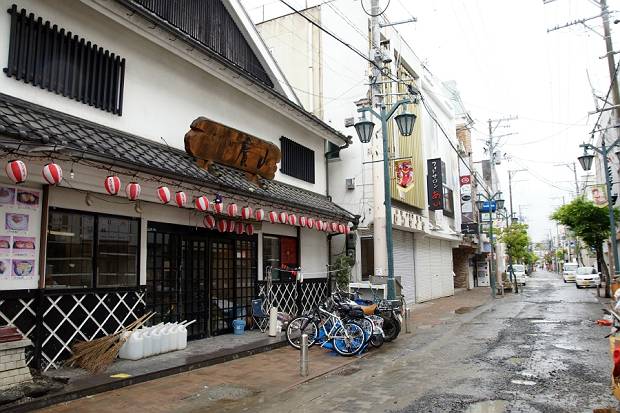
The new headquarters was provided by the owners of the Japanese-style pub (izakaya) “Kouzan” in central Ishinomaki. The Central Kitchen is based on the first floor of the restaurant, with the office on the second floor. With a large river flowing nearby, the restaurant was filled with tsunami mud. After Peace Boat volunteers cleaned the building, the owners said that they were not planning to reopen in the near future and made the extremely generous offer of using the space as a Peace Boat headquarters, leading to the opening of the Central Kitchen project.
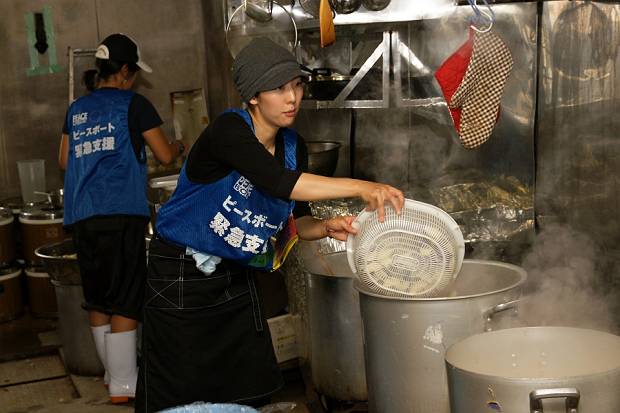
Until now, Peace Boat has provided between 1000-2000 meals per day, with a total of 42,000 meals, mostly prepared at the Ishinomaki Senshu University. However, after the Golden Week holidays, the number of volunteers has dropped drastically. This has made it increasingly difficult to maintain the number of meals provided each day. Furthermore, other organisations and individuals had also been providing meals in other locations through Ishinomaki, however this has also decreased in recent weeks.
In Ishinomaki, if provision of meals through NGOs and other citizens’ groups was to cease, then many people would still not have access to any food other than rice balls and bread provided through donations. Considering this situation, Peace Boat decided that it has to increase the number of meals that can be provided through the daily operations. Furthermore, Japan is now entering the rainy season, and as it gets warmer the storage of ingredients, particularly fresh items such as fruit and vegetables, and maintaining hygiene standards is becoming more difficult.
Thus, after preparing a last meal of “nikujyaga” (a traditional Japanese dish of meat and potatoes), the move from the temporary outdoor kitchen began.
After the nikujyaga was passed on to the delivery team and staff began to pack up the kitchen, a young child came close to the area, smiling and saying “please have this!”
In their hands were posters covered in messages from people who had enjoyed the meals provided by Peace Boat – including words of thanks from people who were not able to present on this last day.
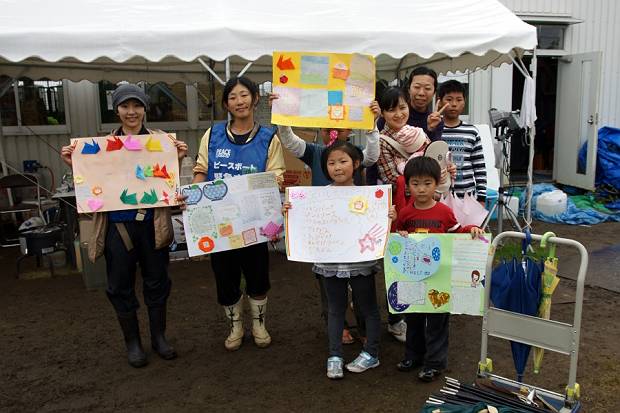
Of course, Peace Boat is not totally leaving the Ishinomaki Senshu University campus. Several teams will remain in place in the tents, cooperating with the Ishinomaki Social Welfare Council, the Disaster Volunteer Centre, and the Ishinomaki Recovery Support Council. Furthermore, the storeroom for relief goods will remain at the university campus.
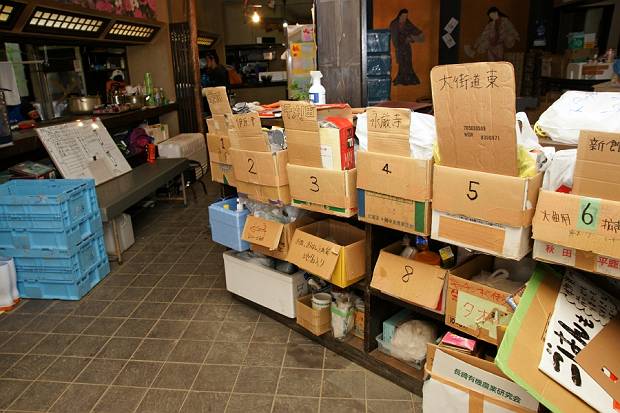
On May 30 a large typhoon hit the area, however most of the kitchen set and equipment was able to be moved from the tents to the “Kouzan” in time. Preparations then continued to collect the necessary equipment and ingredients to officially open the Central Kitchen.
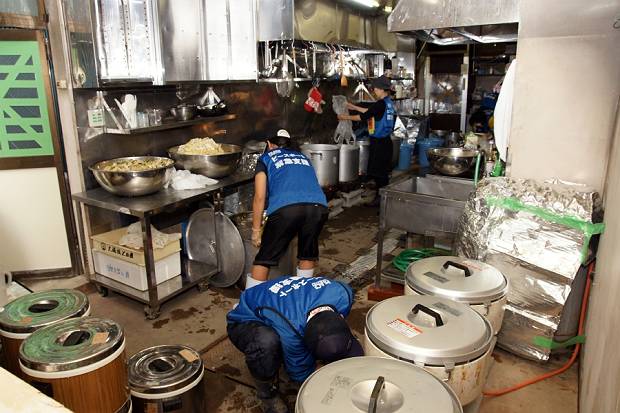
The official opening of the Central Kitchen came on June 1. Thanks to the fact that the building is already set up to cater for large numbers of guests as an izakaya, the kitchen is incredibly efficient and easy to use. Coming up to summer, being able to use large refrigerators is also a big advantage. As well as the function, the safety and hygiene factors have also been greatly improved by moving to an indoor kitchen, and so volunteers will be able to work at an even higher capacity from now. Thanks to this move, the relief efforts have certainly been able to shift towards a more long-term, sustainable view.
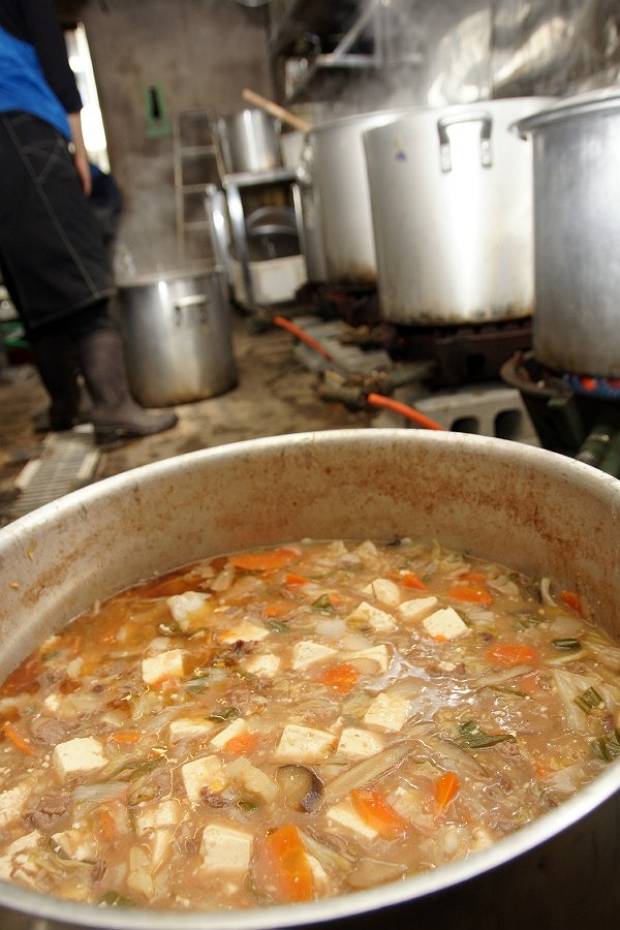
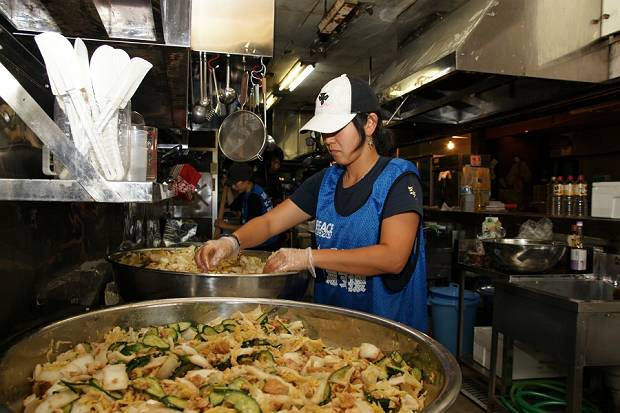
The menu prepared on the first day of operations was a stew made with miso (bean paste), beef and vegetables, as well as a side dish of Chinese cabbage and fried tofu.
As the number of meals prepared is so high, coordination and speed is extremely important. The main members leading the meal preparation team have spent several weeks in Ishinomaki, ensuring that the coordination of volunteers can be done smoothly and comfortably. The volunteers working in the kitchen are not only preparing the menu of that day, but also peeling vegetables, washing equipment, cooking rice and diligently and enthusiastically fulfilling many other roles.

In order to prepare from several hundred to more than one thousand meals each day, the preparations of vegetables in advance is a huge part of the job. If this is all done on the day it will not be ready on time, and so the volunteers wash, peel and cut vegetables such as potatoes and daikon radish in preparation for the following day also.
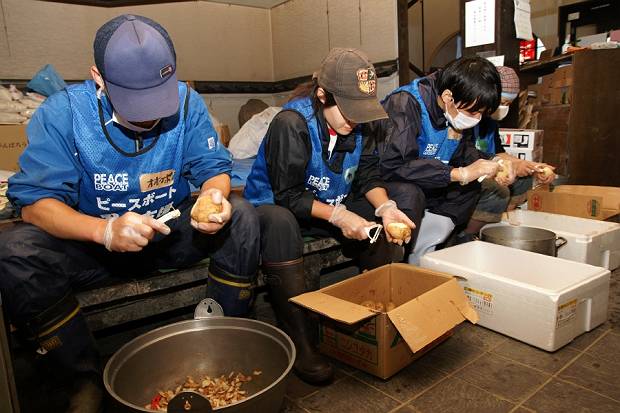
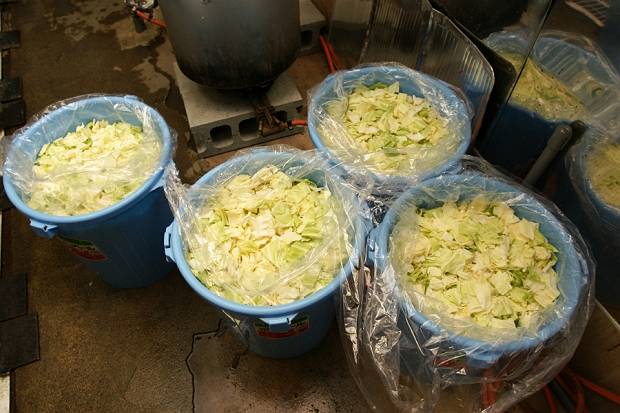
Furthermore, it is not only volunteers working at the Central Kitchen. Thanks to this new operation, members of the local Ishinomaki community including cooks and nutritionists are able to be employed as staff. Thus, the Central Kitchen plays a role much broader than just providing many meals in a safe and clean environment – it also is on the way to becoming a model of best practice for collaboration between relief volunteers from outside and the local community.
The many meals prepared at the Central Kitchen are passed to the delivery teams, who bring them mostly to people living outside of the official evacuation centres. Thus, “Kouzan” has begun to operate as a highly important community kitchen for Ishinomaki and the surrounding areas.
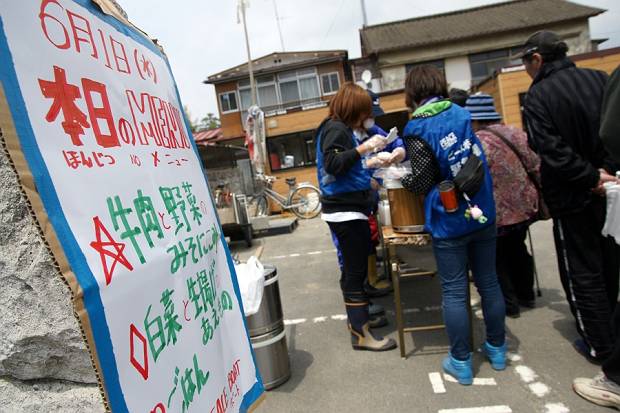
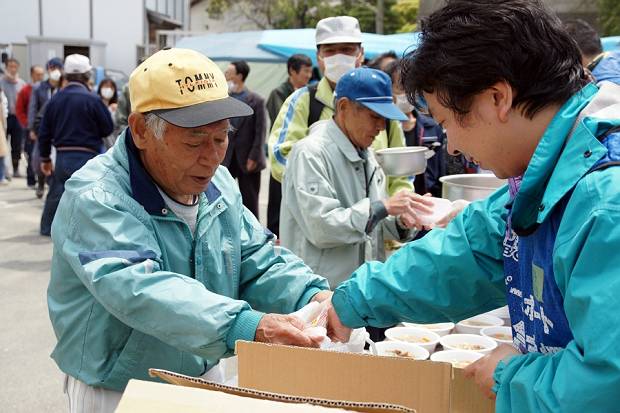
A strong message given by a young boy on the last day of kitchen operations at Senshu University is posted on the large refrigerator in the Central Kitchen: “Thankyou for the delicious, hot meals until now. We will not be beaten by the disaster and so please go to other areas and do your best as well!”
Looking at this message, a member of the kitchen team said, “even one more volunteer coming to Ishinomaki can be a great support for the people working hard towards recovery. If you can make the time, please come to work together with us all!”
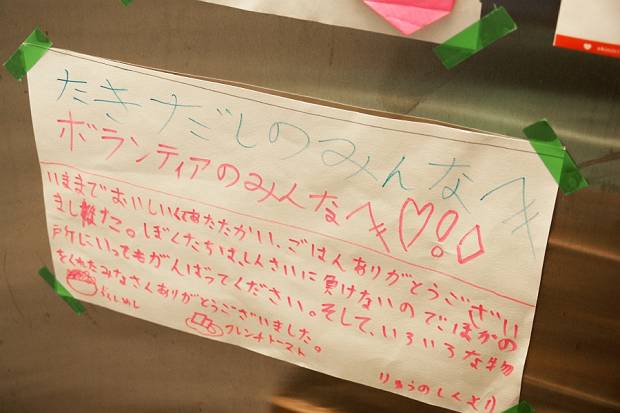
TAGS: camp • central kitchen • delivery • Disaster Relief • donations • Earthquake • food provision • Ishinomaki • Japan • Kanto-Tohoku Earthquake and Tsunami • kitchen • meal • meal provision • Peace Boat • Relief • relief goods • Senshu University • storage • takidashi • Tsunami • Volunteer • volunteering • Volunteers



